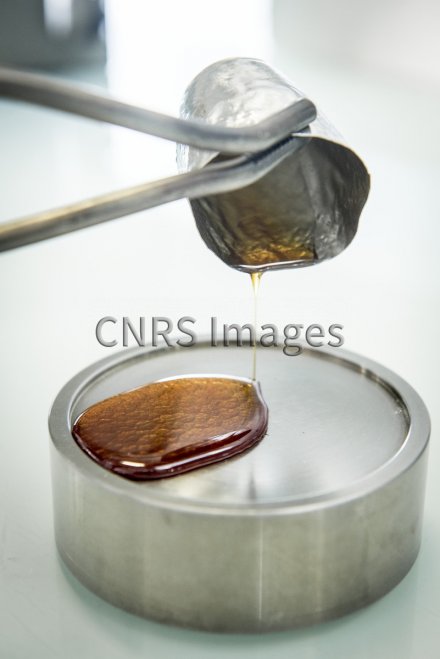Production year
2017

© Jean-Claude MOSCHETTI / IRCER / CNRS Images
20170068_0034
Tellurite glass casting. Research scientists place the precursors into a furnace at 850 °C to melt them. The resulting liquid is then cast in a brass mould to shape and harden it. Glass has the advantage that it is easily moulded, unlike ceramic, which often requires milling in order to shape it. In the furnace, the glass first crystallises before restructuring, thereby becoming a ceramic. Here, research scientists are trying to retain the same composition as the glass for the ceramic. The precursors used (oxide powders) must be very pure. The process is used for tellurite, niobium and bismuth glasses. These small glass parts will chiefly be used for optical fibres.
The use of media visible on the CNRS Images Platform can be granted on request. Any reproduction or representation is forbidden without prior authorization from CNRS Images (except for resources under Creative Commons license).
No modification of an image may be made without the prior consent of CNRS Images.
No use of an image for advertising purposes or distribution to a third party may be made without the prior agreement of CNRS Images.
For more information, please consult our general conditions
2017
Our work is guided by the way scientists question the world around them and we translate their research into images to help people to understand the world better and to awaken their curiosity and wonderment.